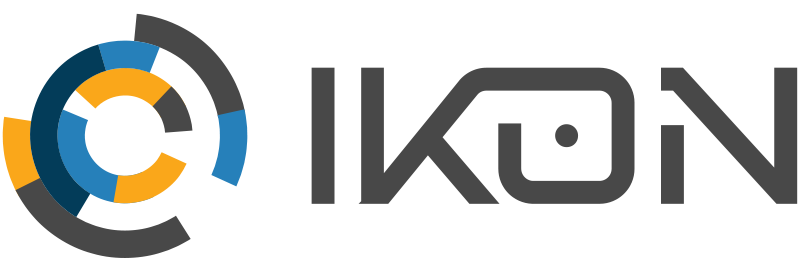Although some people may still have the perception that smart watches are mainly time tracking devices for geeks, and that they are only good for counting steps, many more people know that this is no longer true and that they can be of enormous use in a wide variety of work processes. Of course, products from other manufacturers have also come a long way from the early smart watches, but Apple Watch has even more to say that it has exceeded the expectations of the public with its ground-breaking developments. So why shouldn't such a compact, meticulously designed device with a surprisingly powerful 'brain' for its size be useful in the corporate world?
The Apple Watch that's always at hand
As employers, it's natural to want to use existing resources to their full capacity. It is the same regarding devices given to employees. With Macs®, iPads® and iPhones®, more and more companies are open to employees using them not just in the usual ways (answering emails, making calls), but also to incorporating Apple® products into more creative processes, collaborative tasks and taking advantage of Apple's brilliantly seamless and coordinated systems for multi-device use.
We're also hearing more and more about the Apple Watch as a way to boost efficiency and employee well-being, and while it wasn't a trivial idea before, there's now a growing recognition that the smart watch can play a role in the corporate toolkit. Moreover, we are talking about a piece of equipment that is a smaller investment than other Apple devices in terms of price, requires at most an iPhone and has very robust and reliable software. Many workflows are now digital, workers are increasingly mobile, and an Apple Watch is a great companion for working away from the desk! The latest WatchOS® is no longer as dependent on the iPhone as the early operating systems, but Apple is introducing a product that, thanks to its optimized battery life and, at the same time, its powerful and fast performance, functions as an almost fully autonomous mini-computer - on your wrist.
Who could benefit from an Apple Watch at the workplace?
When we want to highlight information from the data dump on an employee, in cases where the notification is urgent and we don't want to make its detection dependent on whether a colleague is sitting at their computer or looking at their phone, Apple Watch can make a huge difference to the workflow. Volvo, for example, has used this device to improve the quality of service in its workshops: when a customer checked in at reception to retain their car, a notification would immediately arrive on the Apple Watch of the workshop employee and the colleague would be on their way to deliver the finished car. Of course, this was just one element of the solution, a much more complex system was built to keep colleagues on the move up to date (even up to the minute) with the team's workflow. Following this model, not only in healthcare and law enforcement, which were the first very successful areas of corporate use of the Apple Watch, but in many other areas, this device can provide a competitive advantage if it is well integrated into corporate processes.
There are already a number of third-party applications available for the Apple Watch, and the company's own system applications are constantly being enhanced and improved (the industry expects that one of the big announcements at this year's World Wide Developer Conference will be the powerful innovatons to WatchOS 10).
These applications provide employers with options that can help ensure employee well-being or support colleagues on the move, even in the short term. A salesperson or a technician on the road can benefit from a device that is compact and instantly accessible, able to communicate information and perform small but important tasks quickly, without taking up time.
Works under your fingertips
More specifically, there's a lot that can be done with this tiny device that can make workers' jobs easier and potentially make a job and workplace even more attractive to them if their employer provides an Apple Watch as a workplace device. Apple's health and fitness apps are already well known and widely used by their owners. These of course also reveal personal information that many people would be reluctant to share with others, so essentially the employer has no access to it unless the employee chooses to share it. And this, for an employer who values the health and fitness of its employees and the creation of an inclusive and supportive work environment, can be really useful, as it can provide employees with even more personalized opportunities, showing that their physical and health status is not a taboo or a potential threat to their job, but a useful piece of information to provide them with an optimal and more motivating environment and opportunities, like fitness, sport or health support. Conversely, the capacities of fitter, healthier workers are also better utilized. And Apple Watch's revolutionary and long-awaited apps such as Cycle Tracking and Glucose Blood Sugar Tracker can help in this process.
ApplePay® also provides a secure, convenient and fast way to pay on a smart watch, which is an added attraction, and Apple Watch's Siri is also a very useful companion for busy or on-the-go colleagues, as it can send and receive instructions, alerts and notifications without the need to read emails or chat messages while not having our eyes on a screen. Not to mention the fact that they can handle calls more easily thanks to cellular technology. And Apple's renowned assistive technology can also encourage employees who need special assistance, something Apple Watch excels at.
As an employer, you can't forget about employee wellbeing alongside performance optimization. The conveniences offered by Apple and the Apple Watch can give employees an infinitely personalised experience where they feel that the company is listening to them, and that in itself is an incentive to do their best. Just not through rigor and expectations, but through appreciation.


